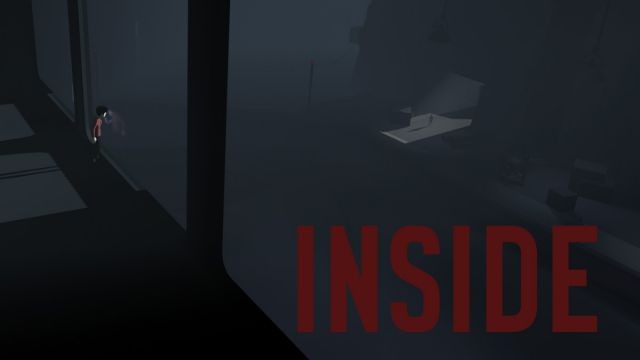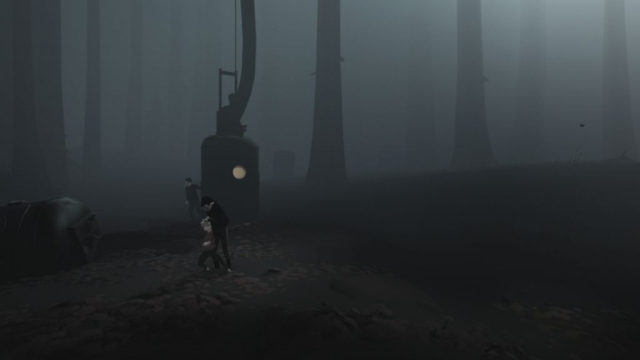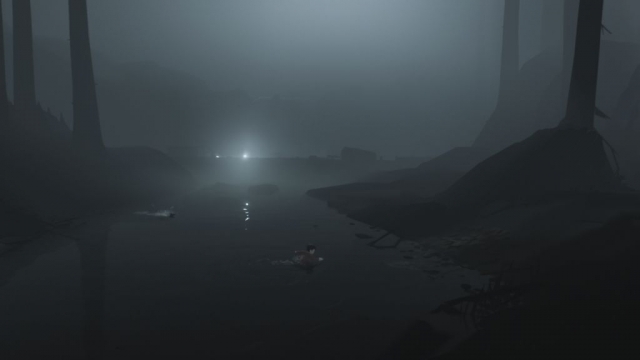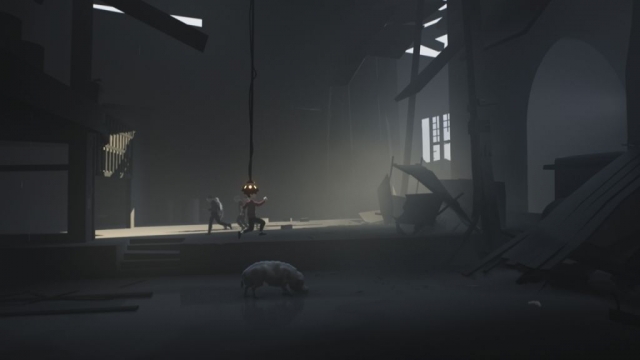Inside

Playdead changed indie gaming with Limbo. This black and white noir tale told a story with no words and was one of the best examples of minimalistic game design of the past 30 years. It was a horrifying game in part because of what you saw – but mostly because of what you didn’t. As a little boy, you could certainly meet a grisly end – but you never saw much of it. You could see limbs flying, but no details – so the horrific event still happened and you learned what not to do – but it didn’t change facts. You still died a horrible death and just thinking about what happened could put a little bit of disgust into your mind if you imagined what it would look like.
Inside takes that same kind of idea and expands upon it. There is more detail in the environments, the world around you, and the characters – but everything is still shrouded in mystery. Much like Limbo, you’re a little kid trying to survive. You have no face, but plenty of body language to convey a struggle, fear, injury, and confidence. The adventure begins with men in black in the background and you’re not sure what they want – but you know it would be wise to avoid them. A failure state reveals that your instincts were correct, as they are willing to drown a small boy in a shallow body of water to do what they need.
A short time later, you need to hide from their searchlight and can only risk drowning in a large river to do so. Panic sets in as you can feel yourself drowning – while the player feels a pulse on the controller alerting them to rise as soon as possible. Positioning is key here because doing it too early will result in being spotted, and doing it too late will result in your demise. Animals are added to the mix as you hop into a cart of dead pigs and need to use their carcasses to progress. It’s a chilling thought, but one that is shrouded in mystery to the player as the level of decay is never shown – but like Limbo, your imagination can make things much worse than the reality we see before our eyes.
There are some horrific things happening in this world, and it becomes strange when you need to make use of them to survive. An early section involves locking on to a device where you lose control of your character – but gain control of nearby people. They appear to just be lifeless husks, and it makes you wonder about areas shown earlier with people being led into trucks. Are they all being harvested like Soylent Green or “just” having their brains taken out?
The story doesn’t give the player many overt answers – but leaving things to the imagination still fills enough blanks to make everything that goes on feel rewarding. Successfully solving the brain teasers gives you both the thrill of victory and the agony of defeat, as a failure state nets you a grisly death with limbs flailing about. You’ll have to use your brain and sometimes multiple senses to solve puzzles, and it makes progress feel like a journey.
One area blasts you with harsh sound waves to the point where your shelter will be blown away if you’re in the wrong area or approach without cover. You can either use hearing to figure out the timing of the blasts, or use the controller vibration to do that and get a better handle on the pattern of the sounds. You’ll die several times without question, but finding the solution will make you feel better and then you can move onto the next challenge. Everything is done with two buttons – A to jump and X to interact.
You never get a weapon, so combat is a largely passive affair. You’ll encounter enemies, sure, but you need to outfox them with clever maneuvering about the area. Dogs will have to be outsmarted with careful positioning and you will wind up in a few areas doing a bit of backtracking to solve the puzzles. Unlike a lot of games, backtracking here doesn’t hurt things – it feels like exploring the same area in a new way, and given that you usually wind up with the solution for doing so, it feels like a good use of your time instead of just padding to fill a runtime.
Inside, like Limbo, is a short and memorable affair. It will take you around three hours to complete and like Limbo, is something best enjoyed in as few play sessions as possible. So much of the game’s puzzle-solving requires being in the moment and the best way to stay in the moment is to just keep playing. Plus, you get more absorbed in what’s going on and it’s easy to earmark a day to play through one game that you won’t soon forget.
Inside is a joy to look at, with a lot of detail being given to the environments while body language tells the tale for the characters. You’ll see struggle, rage, sadness, and exhaustion and feel every single step as you go on the adventure. It’s a stunning game and one that makes great use of a limited art style to evoke a lot of emotions and makes you care about what’s going on in the game from the moment it begins.
Inside’s sound design is one of its best aspects. Playing the game with both my Astro A30s and Status HD Twos showcased how much work went in to making this game’s world something to fear. Off in the distance, you’ll hear clanking and wonder what it is until later when you get up close and personal to the things making the sounds – only now they’re that much louder and impactful. Music is used sparingly to add tension – and it makes the game better as a whole. You know when you hear music that something huge is about to go down, and that ups your level of tension too.
Inside is an absolute masterpiece. As a game, it’s easy to control and a joy to look at and hear. Anyone who loved Limbo will enjoy it, and if you haven’t had a chance to play that game then give it a shot before this. They’re very similar kinds of games, but that prepares you more for this game and it’s still well-worth playing in its own right six years later. Much like Limbo, Inside also has a timeless quality to it and is yet another must-play experience from Playdead.
Reviewed By: Jeremy Peeples
Publisher: Playdead
Rating: 100%
——————————————————————————–
This review is based on a digital copy of Inside for the Xbox One provided by Playdead.
 Game Over Online
Game Over Online










